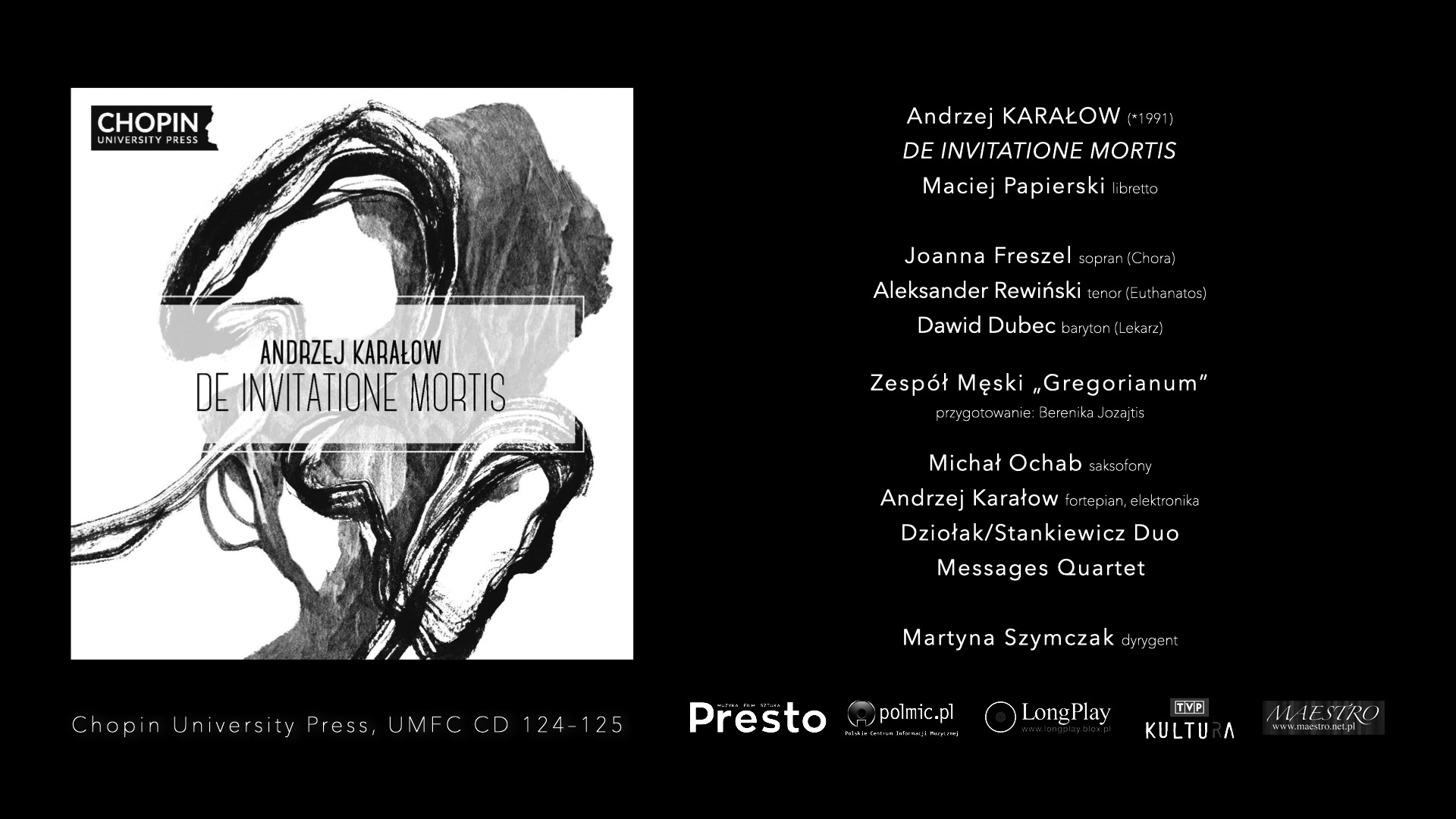DE INVITATIONE MORTIS
In De invitatione mortis we are dealing with a text that is related to the values and philosophy of the Christian religion. Death, around which the main theme revolves, is not presented as the evil awaiting the man at the end of his life. It is only a symbolic transition to another, new world. The metaopera De invitatione mortis aims to show a different approach to the genre of opera by combining different stylistic and technical influences. It is a kind of a ?desktop? opera, devoid of stage action: It adopts the form of a mystery play, in many aspects of an ascetic music drama, in which the voice acts as the communicator of the libretto?s content and its message. The mystery play character of De invitatione mortis concerns primarily the creation of a sound environment whose centre is occupied by the word, leading the course of the entire metaopera, which can be perceived as a ritual. One can say that De invitatione mortis is a mystery play in which the sound and word, dominating the whole structure, create a new, alien world based on synesthetic and abstract references. De invitatione mortis is also an attempt to address the issue of merging various genres from the borderline of classical, improvised, and electronic music.
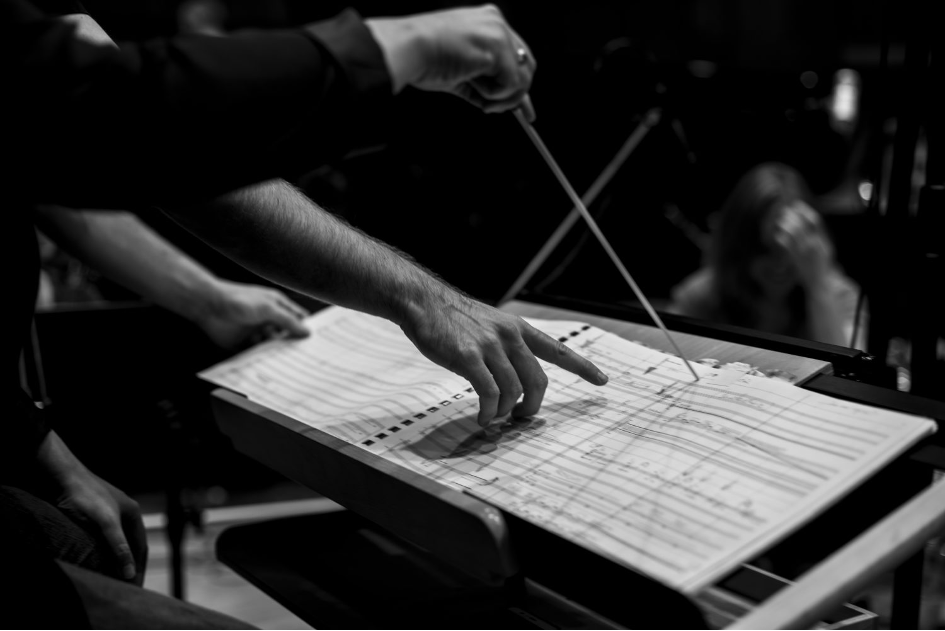
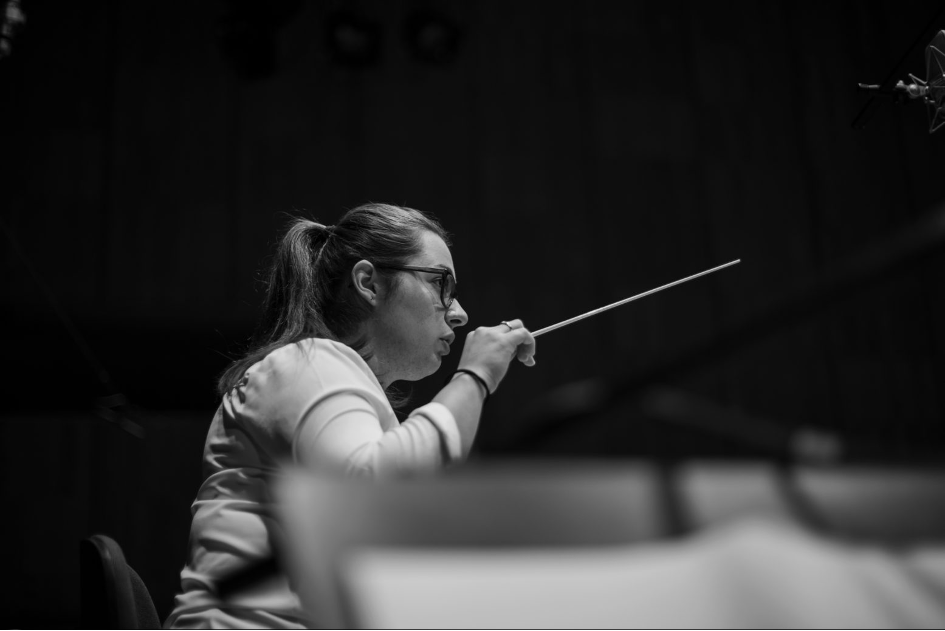
W De invitatione mortis mamy do czynienia z tekstem, który związany jest z przekazem wartości i filozofią religii chrześcijańskiej. Śmierć, wokół której obraca się główny wątek, nie jest przedstawiona jako zło, które czeka na człowieka u kresu jego życia. Stanowi ona jedynie symboliczne przejście do innego, nowego świata. Metaopera De invitatione mortis na celu ukazanie innego podejścia do gatunku operowego w kontekście łączenia różnych wpływów stylistycznych i technicznych. Jest to rodzaj opery ?pulpitowej?, bez akcji scenicznej: przyjmuje ona formę misterium, w wielu aspektach ascetycznego dramatu muzycznego, w którym głos pełni funkcje komunikatora treści libretta i jego przekazu. Misteryjność De invitatione mortis dotyczy przede wszystkim wytworzenia dźwiękowego środowiska, w którego centrum znajdzie się słowo prowadzące przebieg całej metaopery dającej się postrzegać jako rytuał. Można powiedzieć, że De invitatione mortis stanowi misterium, w którym dominujące w całej strukturze dźwięk i słowo tworzą razem nowy, obcy świat bazujący na synestetycznych i abstrakcjonistycznych odniesieniach. De invitatione mortis jest również próbą podjęcia się zagadnienia fuzji różnorodnych gatunków z pogranicza muzyki poważnej, improwizowanej i elektronicznej.
Characterised by extensive symbolism and expression, the libretto is a poetic triptych written by Maciej Papierski for the special needs of the work. The form of the opera, based on three acts-movements, within which there are three songs-images presented by three individual protagonists, reflects the layout of the text directly in its shape. Necessary to create an integrated opera performance, the relationship between the music and text determines the arrangement of such a form, referring to the tradition of the ancient theatre: A tripartite construction, unity of action, time, and place, fate, three singers-actors confronted with an instrumental octet, and a chamber male vocal ensemble. One of the roles of the actors-singers is also responsible for the function of the leader of the chorus, i.e. coryphaeus.
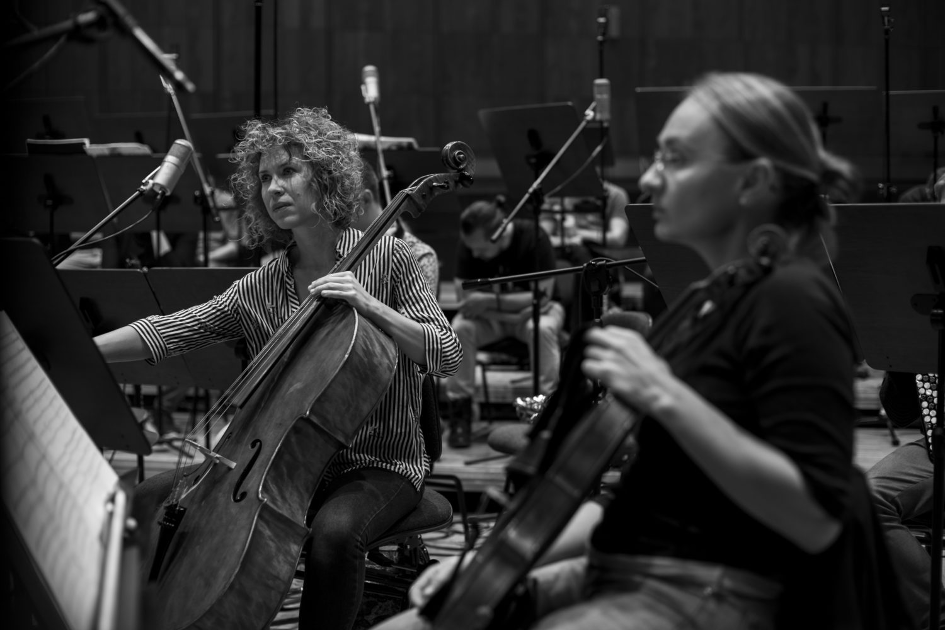

Charakteryzujące się rozbudowaną symboliką oraz ekspresją libretto to poetycki tryptyk napisany przez Macieja Papierskiego na specjalne potrzeby utworu. Forma opery, oparta na trzech aktach-częściach w ramach których znajdują się trzy pieśni-obrazy przedstawione przez poszczególnych trzech bohaterów, bezpośrednio angażuje układ tekstu w jej kształt. Niezbędna do stworzenia zintegrowanego operowego spektaklu relacja muzyki z tekstem determinuje układ takiej formy, nawiązując do tradycji teatru antycznego: trójdzielność konstrukcji, jedność czasu i miejsca akcji, działanie fatum, występujących na scenie trzech śpiewaków-aktorów skonfrontowanych z oktetem instrumentalnym oraz kameralnym męskim zespołem wokalnym. Jedna z ról śpiewaków-aktorów odgrywa również funkcję przewodnika chóru ? koryfeusza.
I. Euthanatos
With the first cracking of the shell, with the bursting of the seed, with a tiny bit of oxygen – blooms the time. It blooms slowly,
it hisses and foams in the blood – it wants to grow.
It tints the scaffoldings, the dishes and the bones.
New worlds grow on the raw board of the stage,
but they will never reach it, they will not reign the theatre.
People know nothing of clocks. They float through their sleep. Those who have never born any traits of the truth, will get lost. Reverbs, aftersights, echoes and holograms.
Time and I are no friends. I end time
and commence permanence. Clocks are but golden, dead circles.
You ? the one who denies me a place – here I come
to harvest the crop of your time.
You and your end both know what will get smashed against the reef.
V. The Physician
The end is nigh and every moment
turns into a still frame reduced to ashes.
The insensitivity of death turns
the frailty of the image into a button of paint
It takes the pigment away,
extracting it from blood and tissues.
A heap of metal rubble and smashed glass
instead of a work of art.
I would like to find a moment of obliviousness,
a crumb of time falling out of sight
of death.
IX. The Ill One
A rose shrub is rising in my windows,
its little twigs flowing with the song of the earth.
A light breeze sways the murky pattern of its sprouts, the green threads, but I do know
that today the windows will get darkened
by a wall of leaves. Awaiting,
I will rise and look into the mirror, into the shadow
turning green with the dusk. Death?
I have always been carrying a rose thorn
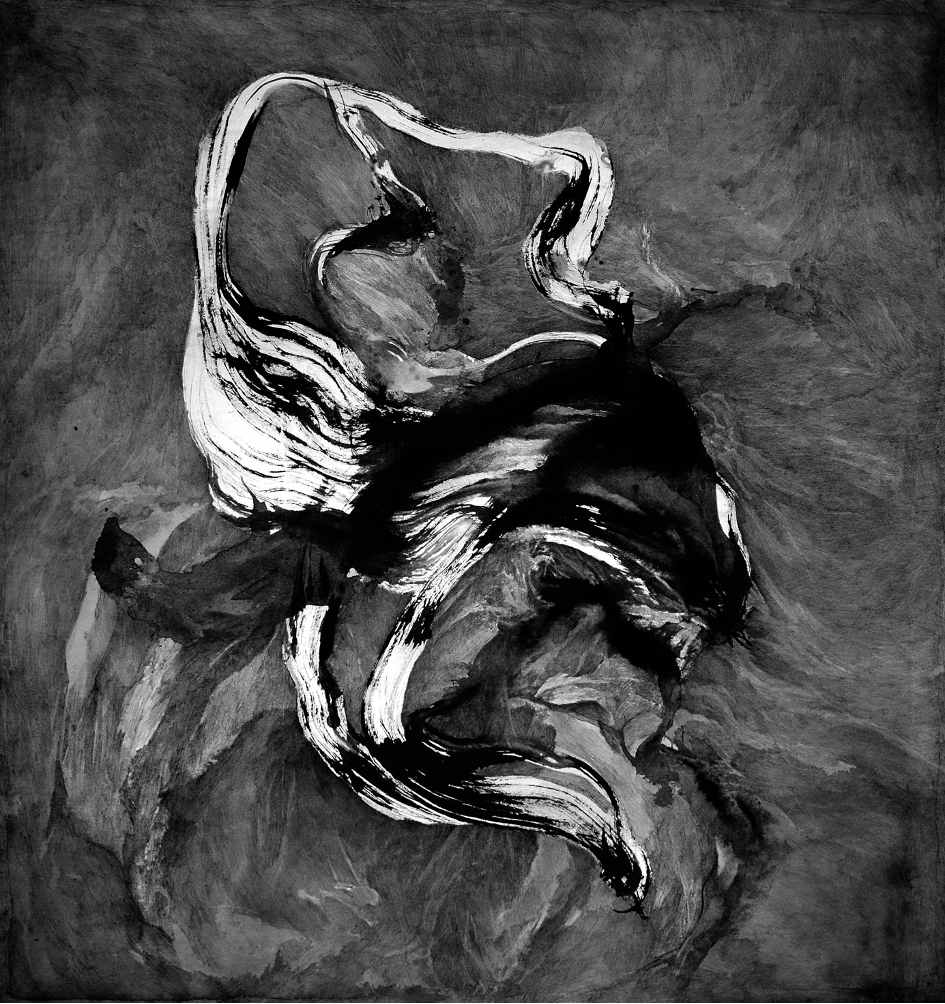
artwork: Keiji Matsumoto
- Euthanatos
Pierwszą rysą w skorupce, pęknięciem nasiona, drobinką tlenu rozkwita czas. Rozkwita powoli, syczy i pieni się we krwi, chce rosnąć.
Czas barwi rusztowania, naczynia i kości. Nowe światy rosną na surowej desce sceny ale nie sięgną do niej, nie zawładną teatrem.
Ludzie nie znają się na zegarach. Płyną przez sen. Zgubią się ci, którzy nie nosili znamion prawdziwego. Przegłosy i powidoki, echa i hologramy.
Czas nie jest ze mną w przyjaźni. Ja kończę czas i zaczynam trwanie. Zegary to tylko
złote, martwe okręgi.
Ty, który odmawiasz mi miejsca, przychodzę, By zebrać plon twojego czasu.
Ty wiesz i twój kres wie, co roztrzaska się o rafy.
V. Lekarz
Nadchodzi kres i każda chwila
obraca się w spopielały kadr.
Nieczułość śmierci sprowadza
Kruchość obrazu w guzik farbki
Zabiera z powrotem pigment,
Wyciąga go z krwi i tkanek.
Sterta żelastwa i zmiażdżonego szkła
Zamiast dzieła sztuki.
Chciałbym znaleźć moment nieuwagi,
Okruch czasu wypadający z zasięgu wzroku
Śmierci.
IX. Chora
W moich oknach wschodzi krzew róży,
w jego gałązkach płynie śpiew ziemi.
Lekki wiatr chwieje mętnym wzorem pędów,
zielonych nitek, ale wiem,
jeszcze dziś okna zaciemni
mur liści. W oczekiwaniu
wstanę i spojrzę w lustro, w cień
zieleniejący ze zmrokiem.
Śmierć?
Ja od zawsze mam w sercu
róży cierń.
Drawing inspiration from atmospheric sounds (being a part of ambient music, as far as the sound is concerned), De invitatione mortis becomes a field for extending colour relationships (primarily in the synesthetic sense) between instruments (as well as between the electronic layer) and vocalists, and, therefore, creation of a sound world to which the entire mystery is transferred. The need to create sounds contributing to dark colours, also in its literal meaning, plays an essential role. One can call this need to use a specific, subdued colour ?the aesthetics of the night,? which refers both to the relationship between pitch and colour and the desire to create one?s own sound and colour world, i.e. the aura and atmosphere generated by the musical layer itself. Synesthesia plays an important role in a number of my works ? it is significant both in De invitatione mortis and in the previous one-act opera Kepler, where each of the three scenes was based on a different colour theme. De invitatione mortis uses a colour that is largely inspired by text. The libretto itself and the ?play of lights? appearing in it constitute an important reference to the sound colour and consequently to harmony and expression.
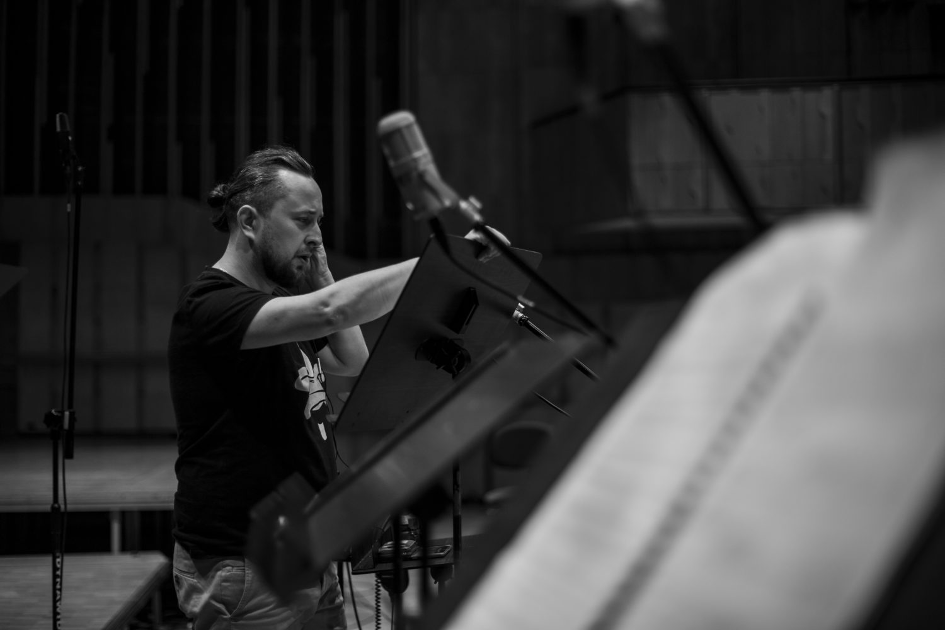
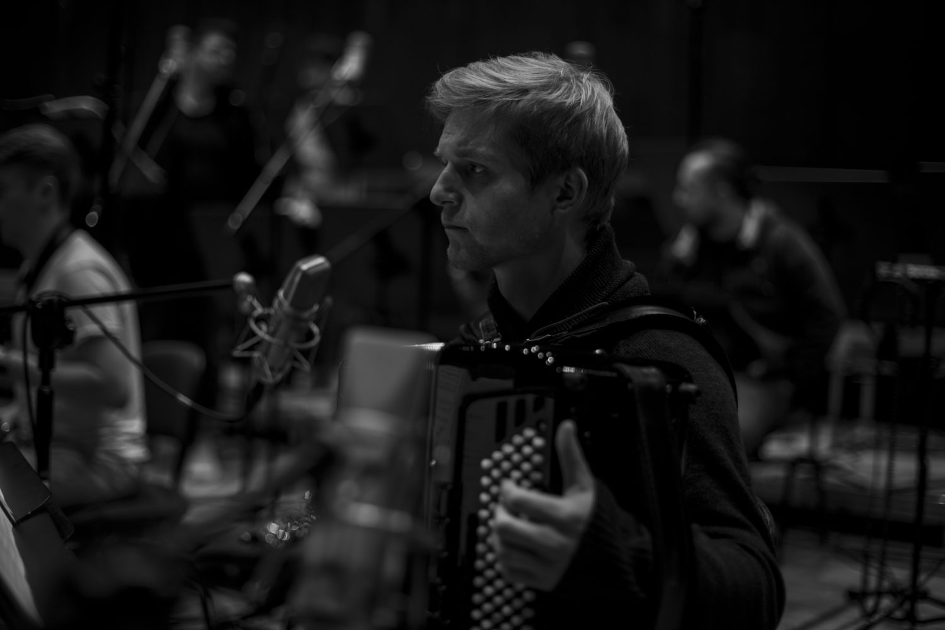
Czerpiąc inspiracje z atmosferycznych brzmień (wchodzących brzmieniowo w rejony muzyki ambientalnej), De invitatione mortis staje się polem do rozszerzenia relacji kolorystycznych (przede wszystkim w rozumieniu synestetycznym) między instrumentami (jak również pomiędzy warstwą elektroniczną) i wokalistami, a co za tym idzie, stworzeniem świata dźwiękowego, do którego zostaje przeniesione całe misterium. Istotną rolę pełni potrzeba tworzenia dźwięków składających się na ciemną kolorystykę, również w rozumieniu dosłownym. Można tę potrzebę użycia konkretnej, stonowanej kolorystyki nazwać “estetyką nocy”, która odnosi się zarówno do relacji wysokości dźwięków z kolorem, jak i chęci wytworzenia własnego świata dźwiękowo-kolorystycznego: czyli aury i atmosfery wytwarzanej przez samą warstwę muzyczną. Synestezja odgrywa istotną rolę w wielu moich utworach – jej ważny udział również pojawia się w De invitatione mortis, a także w poprzedniej jednoaktowej operze Kepler, gdzie każda z trzech scen została oparta na innym temacie kolorystycznym. De invitatione mortis wykorzystuje kolor, który w dużej mierze inspirowany jest tekstem. Samo libretto i występująca w nim ?gra świateł? stanowi istotne nawiązanie do kolorystyki dźwiękowej, a co za tym idzie ? harmoniki i ekspresji.
The sound inspirations in De invitatione mortis lie both in contemporary music trends and improvised music; associations with minimal music, ambient, or modern jazz are also justified. However, the metaopera does not directly take over the features contained in the rhythm and metrical division dominant in the mentioned trends. It is important to indicate their characteristic, subdued sound, the fact of operating with saturated, yet uniform sound layers (or clouds, also called textures), which continually create constant or changeable melodic-harmonic structures as a result of the inspiration. Therefore, the main goal is the integration of sound colour, harmony, and melody as one harmonising factor influencing the form and sound of the composition.
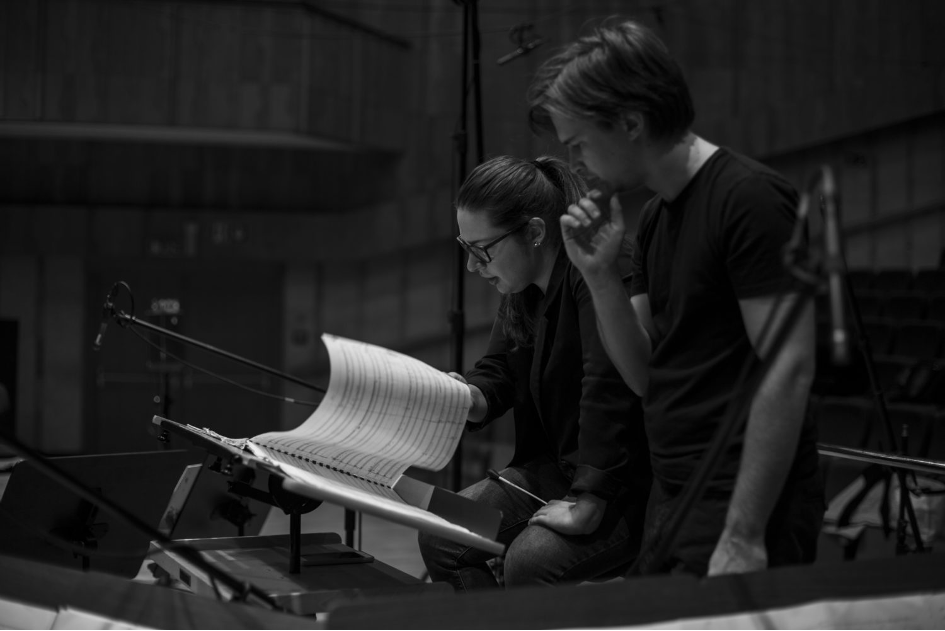
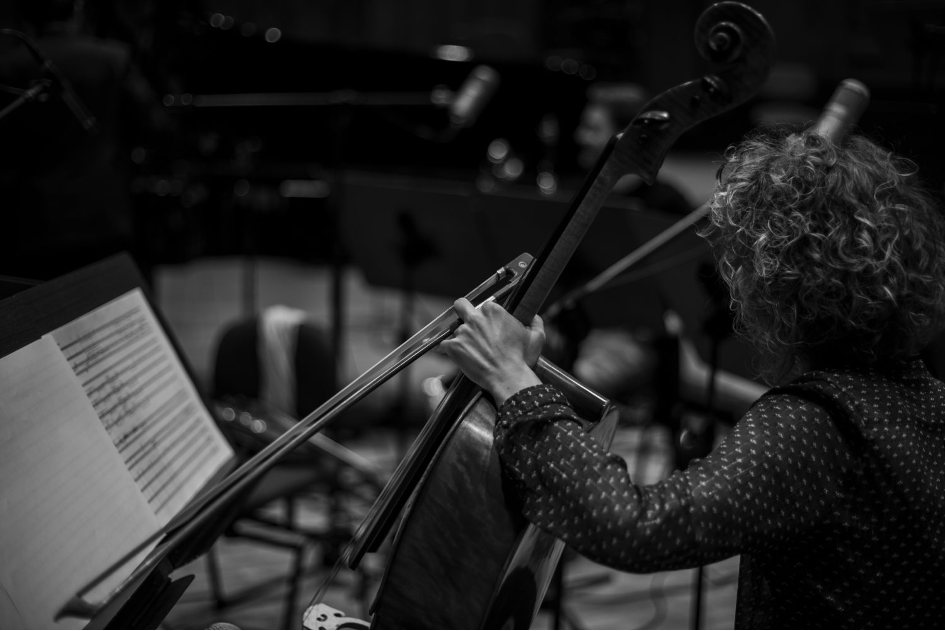
Inspiracje brzmieniowe w De invitatione mortis leżą zarówno w nurtach muzyki współczesnej, jak i improwizowanej, ukierunkowuje skojarzenia w stronę minimal music, ambientu, czy nowoczesnego jazzu. Metaopera nie przejmuje bezpośrednio cech zawierających się w ich rytmice, podziale metrycznym, dominujących we wcześniej wymienionych nurtach. Istotne jest wskazanie jako efekt inspiracji ich charakterystycznego, stonowanego brzmienia, operowanie nasyconymi, lecz jednolitymi warstwami (lub chmurami, zwanymi również teksturami) dźwiękowymi, które nieustannie kreują stałe lub zmienne struktury melodyczno-harmoniczne. Głównym celem jest zatem integracja kolorystyki, harmoniki i melodyki jako jednego współgrającego czynnika, który wpływa na formę i brzmienie kompozycji.
The main idea in the scenes of The Ill One was to confront the human life existing in “our world” with the aspect of the mysticism of the afterlife, which the man is unable to comprehend. In De invitatione mortis, the figure of Euthanatos is a sui generis symbol of a world to which every human being is heading, or at least he mediates between it and the human one. The role of The Physician, who is the most “earthly” figure, is in the human, literal world, but, due to his profession, he is in contact with the place to which The Ill One is heading. The Physician is an objective witness of the intermingling worlds and the coming fate. Deceptively, he is not able to influence where the human life is heading – he has only the power to slightly delay the time the fate arrives. In the last act, the listener is a witness to how The Physician is reconciled to the fact that the human life is only a small part of a great plan and there is no possibility of human interference in the fate and time dimension. The last bars of De invitatione mortis are a kind of acceptance of the death?s invitation and surrendering to it. The end does not mean darkness and murk at all; its presence signals the beginning of a new existence of the soul.
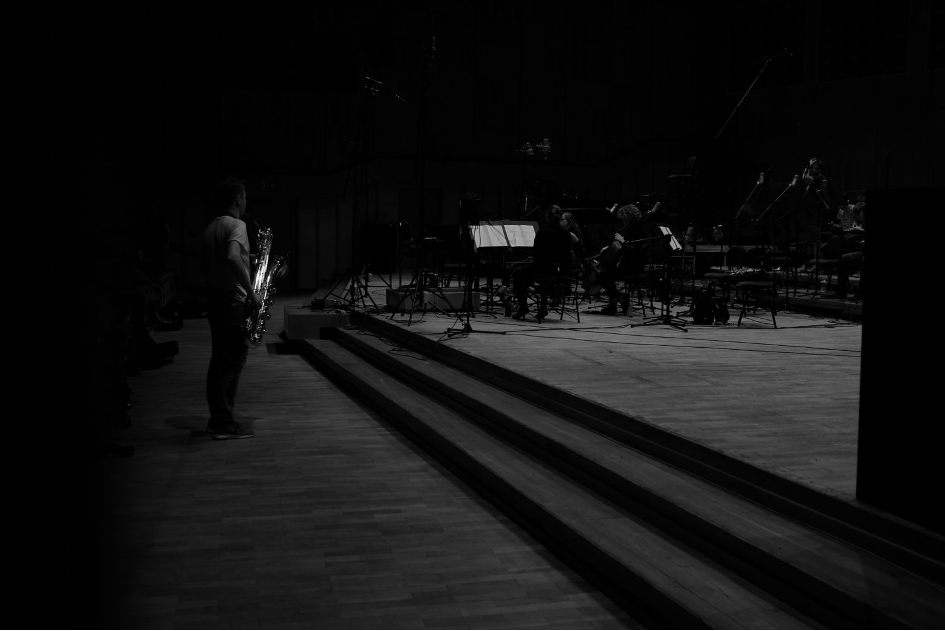
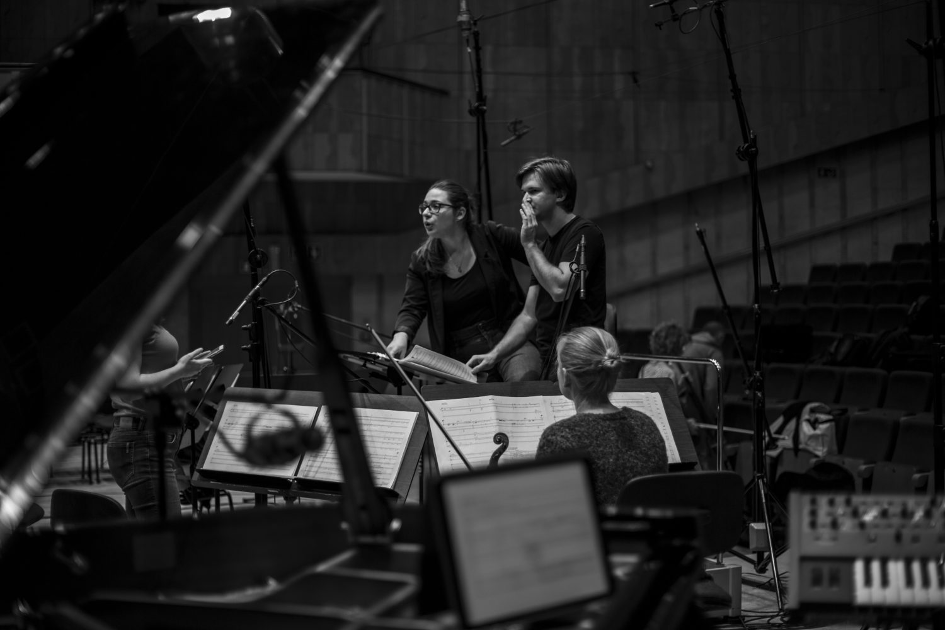
Główną ideą w scenach należących do Chorej było skonfrontowanie życia ludzkiego egzystującego w ?naszym świecie? z aspektem mistyczności życia pozagrobowego, którego człowiek nie jest w stanie pojąć. W De invitatione mortis postać Euthanatosa jest swoistym symbolem świata, do którego zmierza każda ludzka istota, a przynajmniej pośredniczy między nim a światem ludzkim. Rola Lekarza, która jest najbardziej ?ziemską? postacią znajduje się w świecie ludzkim, dosłownym, lecz, ze względu na swój zawód, ma ona styczność z miejscem, do którego zmierza Chora. Lekarz jest obiektywnym świadkiem przenikających się światów i nadchodzącego fatum. Wbrew pozorom nie jest on w stanie wpłynąć na to, dokąd zmierza ludzkie życie ? w jego mocy leży jedynie nieznaczne przesunięcie czasu nadejścia tego losu. W ostatnim akcie słuchacz jest świadkiem, jak Lekarz godzi się z tym, że życie ludzkie jest tylko małą częścią wielkiego planu i nie ma możliwości ingerencji człowieka w los i wymiar czasu. Ostatnie takty De invitatione mortis są swoistym przyjęciem zaproszenia śmierci i oddanie się w jej ręce. Koniec wcale nie oznacza ciemności i mroku; jej obecność sygnalizuje początek nowej egzystencji duszy.
De invitatione mortis is a subjective view and an attempt to tame inexplicable things and phenomena, such as death, transience, or fate. Papierski’s libretto, stopping the action, transfers three heroes representing various roles and existential situations to the level of reflection and ethereal discussion: A terminally ill woman, physician, and personification of death (Euthanatos) as a guide to the world of the living and the dead. The individual parts of The Ill One, Euthanatos, or The Physician can be interpreted in an ambiguous way: On the one hand as a personal manifestation of a lonely person, her cry and desire to free herself from the inevitable fate, and on the other hand as an attempt to intellectually touch the eschata.
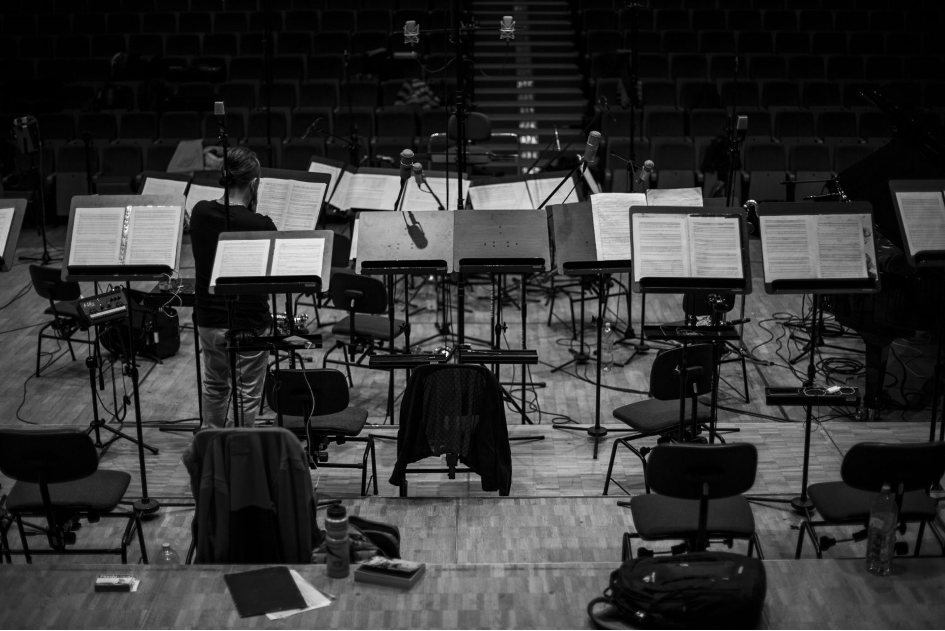
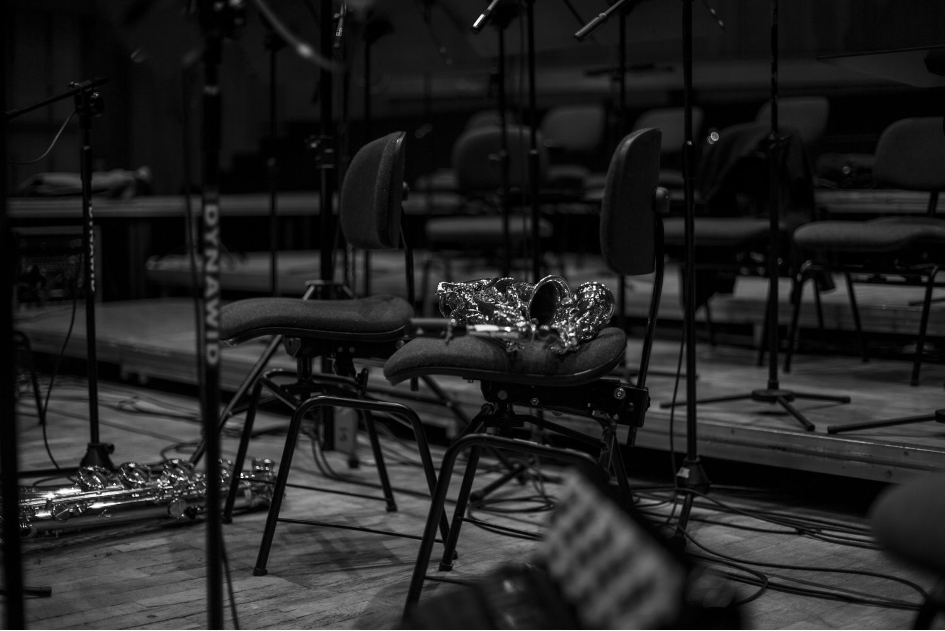
De invitatione mortis jest subiektywnym spojrzeniem i próbą ujarzmienia niewytłumaczalnych rzeczy i zjawisk, takich jak śmierć, przemijanie czy los. Libretto Papierskiego zatrzymując czas akcji, przenosi do poziomu refleksji oraz eterycznej dyskusji trzech bohaterów reprezentujących różne role i sytuacje egzystencjalne: terminalnie chorą, lekarza oraz samo uosobienie śmierci (Euthanatos) w roli przewodnika po świecie żywych i umarłych. Poszczególne partie Chorej, Euthanatosa, czy Lekarza można interpretować w sposób niejednoznaczny: z jednej strony jako osobisty manifest osamotnionej osoby, jej krzyk i chęć wyzwolenia się z nieuniknionego fatum, z drugiej zaś strony jako próbę rozumowego dotknięcia rzeczy ostatecznych.
CREDITS
Recording, mix, mastering: Michał Bereza, Igor Szymański
Program note: Andrzej Karałow
Translation: Żaneta Pniewska
Artworks: Keiji Matsumoto
Photos: Zuza Gąsiorowska
Layout: Łukasz Pawlak
Editor: Emilia Dudkiewicz
PERFORMERS
Joanna Freszel – sopran (Chora/The Ill Sone)
Aleksander Rewiński – tenor (Euthanatos)
Dawid Dubec – baritone (Lekarz/The Physician)
Male Vocal Ensemble “Gregorianum” (preparation: Berenika Jozajtis)
Michał Ochab – saxophones
Andrzej Karałow – piano, synthesizer, electronics
Dziołak/Stankiewicz Duo: Jacek Dziołak – clarinets / Mateusz Stankiewicz: accordion
Messages Quartet:
Małgorzata Wasiucionek – I violin
Oriana Masternak – II violin
Maria Shetty – viola
Beata Urbanek-Kalinowska – cello
Martyna Szymczak – conductor

